Let’s dive into how we can boost our bat speed and power. These factors are key to our success in baseball. By using the right techniques, we can increase bat speed and hit harder. We’ll explore strategies like overload and underload training and how swing mechanics play a big part.
Also, focusing on skill, feedback, and setting goals will help us improve. For more tips and stats, check out this resource1.
Key Takeaways
- Understanding bat speed as a key element in achieving powerful hits.
- The importance of overload/underload training techniques.
- Utilizing technology for monitoring and improving performance.
- Enhancing swing mechanics through focused drills.
- Integrating strength training to bolster bat speed effectively.
Understanding Bat Speed and Its Importance
Bat speed is key to hitting well. It’s the speed of the bat when it hits the ball. Learning about bat speed helps us hit harder. As we get better, improving bat speed makes us hit the ball harder and reach higher speeds.
What is Bat Speed?
Bat speed is measured by the speed of the sweet spot when it hits the ball. This shows how bat speed and exit velocity are connected. Every 1 mph increase in bat speed means a 1.2 mph boost in exit velocity, which affects how far we hit the ball2. This means faster bat speeds mean more powerful hits, which makes us better hitters3.
Why Bat Speed Matters for Hitting Power
Bat speed is important for more than just numbers. It affects how well we score. Faster bat speeds mean higher exit velocities, which helps us reach base more often. Studies show players with faster bat speeds do better, especially with pitches they can hit squarely3. So, working on our bat speed can really boost our hitting power.
Training with overload and underload techniques is key to getting faster. Using bats that are heavier or lighter than our game bats trains our muscles. This helps us get faster4. Knowing and using these methods helps us hit better.
Factors Influencing Bat Speed
Understanding what affects bat speed can make us better hitters. Two key things are the bat’s weight and how it moves. Knowing these helps us train to swing faster.
The Role of Bat Weight
The bat’s weight affects how fast we swing. Heavy bats give more energy but slow down the swing. Lighter bats help us swing faster but hit the ball less hard. Finding the right balance is key to a good swing.
Studies show that a faster bat means a harder hit5. So, picking the right bat weight is crucial for hitting well.
Impact of Bat Mechanics on Speed
Good bat mechanics help us swing faster. They let us use the energy of the swing better. A good swing connects our body and the bat well, making us swing harder and faster.
Research says a faster bat means a harder hit6. Working on these mechanics helps us use our strengths in games.

How to Measure Bat Speed Effectively
It’s key to measure bat speed to track our training progress and tweak our approach. Traditional radar guns don’t give us the detailed info we need. That’s why bat sensors are becoming more popular. They measure speed right from the sweet spot, giving us precise data for improvement. Tools like Blast Motion, Motus Batting, and Diamond Kinetics are great for measuring bat speed and hand speed7. These technologies help us analyze our performance and pinpoint areas to work on.
Using Bat Sensors and Technology
Bat sensors are vital in our training, offering real-time data on speed and swing mechanics. They show how swing errors impact our performance, helping us focus on specific areas for better efficiency. Knowing the exit velocity of the ball is also crucial for hitting success. A higher exit velocity means better hitting outcomes, highlighting the exit velocity importance. Working on both bat speed and exit velocity can greatly improve our performance8.
The Importance of Exit Velocity
Exit velocity is a key metric that affects hitting success. As we aim to increase our bat speed, we must consider its effect on exit velocity. Improving swing efficiency often leads to better bat speed and exit velocity7. Training methods like Hitting Plyo Ball® and specific drills enhance our techniques, boosting efficiency and effectiveness9. With bat sensors, we can fine-tune our training for top performance on the field.
Improve My Bat Speed And Power
To boost bat speed and power, we can use overload and underload training. Overload training means using heavier bats to build strength. Underload training uses lighter bats to help us swing faster. This mix helps improve muscle efficiency and boosts our overall performance.
Overload and Underload Training Techniques
Both overload and underload training help improve bat speed. Using lighter bats can make our swing speed better, which is key for the game. Studies show that practicing with different bat weights can make our bat speed better over time10. These methods help us understand our swing better and push us to do more.
The Benefits of Specific Training Routines
Having specific training routines is key to reaching our goals. Exercises like med ball throws and jumps help build fast-twitch muscle fibers for speed. Other exercises, such as DB Cleans and Plyo Push-ups, also improve our swing10. Using tools like Blast sensors lets us track our progress and adjust our training as needed11.
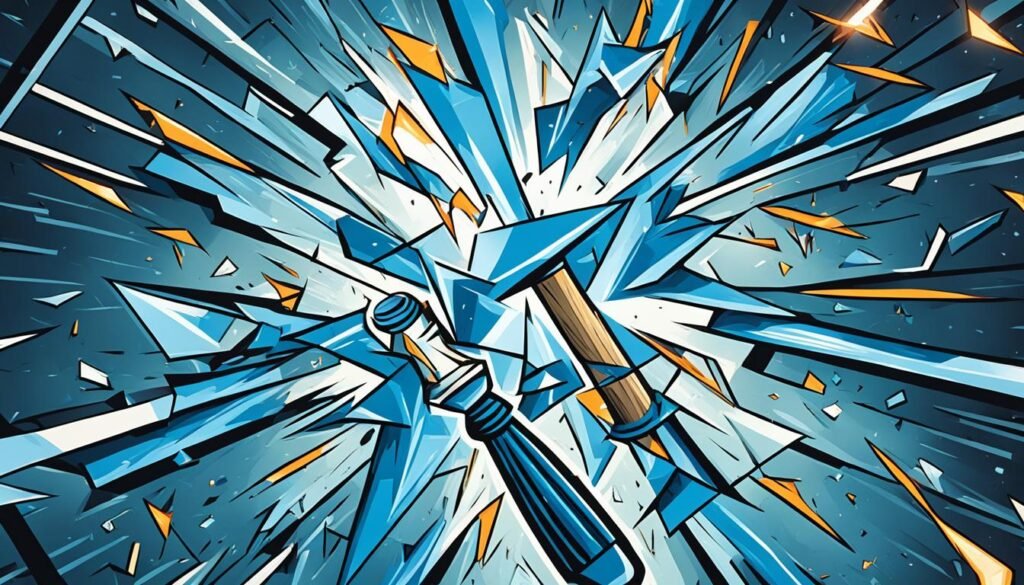
| Training Type | Focus | Example Exercises |
|---|---|---|
| Overload Training | Building Functional Strength | Weighted Bats, DB Cleans |
| Underload Training | Increasing Swing Speed | Light Bats, One-Arm Drills |
| Explosive Training | Fast-Twitch Muscle Development | Med Ball Throws, Plyo Push-ups |
These focused training methods do more than just boost bat speed. They also increase our hitting power12. By refining our drills and techniques, we’ll see our performance improve on the field.
Hitting Mechanics: The Foundation of Bat Speed
When we focus on hitting mechanics, we set the stage for boosting our bat speed. We learn about kinetic linkage to move energy smoothly through our swing. This is key for making power. It starts with our lower body and ends with a strong bat swing.
Understanding Kinetic Linkage in the Swing
Kinetic linkage means turning our body’s energy into power during the swing. Research shows that up to 70% of bat speed comes from our lower body before our arms and hands kick in13. This shows how important it is to use our legs and hips right for better swing mechanics. Using resistance bands can make us swing faster by 2-3 mph, proving that a strong core and lower body helps13.
Power Generation through Proper Mechanics
To hit hard, our swing must be done right. Swinging with a heavier bat can make us swing faster by over 3%, showing small changes can make a big difference13. Video analysis and expert advice can also make our swing 23% better, showing how tech helps us improve13. Training our minds and visualizing our swings can boost our hitting power by up to 15%13. By grasping these power generation tips, we can swing smoother and hit harder.
Conditioning for Better Bat Speed
Improving our bat speed is key to becoming better hitters. A good training plan that includes strength and physical conditioning is vital. This approach helps build the muscles needed for a strong swing. It’s proven that proper conditioning boosts bat speed and power14.
Importance of Strength Training
Strength training is crucial as it works on the core, legs, and upper body. This improves our stability and power. It’s important to balance hitting mechanics with conditioning. Aim for 70% on hitting mechanics and 30% on conditioning for best results14.
Getting stronger helps us see how a strong player can increase their bat speed. For example, a high school player went from 68 mph to 5-7 mph faster in just three weeks with focused training14. This shows how strength training quickly pays off.
Combining Physical Conditioning with Swing Mechanics
Success comes from combining good hitting mechanics with a solid conditioning program. After refining their swing, players reached elite bat speed levels, like those at the Division 1 level. This story shows how focusing on mechanics and conditioning boosts bat speed and hitting power14.
Training with plyometric exercises like squat jumps and box jumps can quickly stretch our muscles, making us faster15. Strength training also makes our body more efficient with energy, increases swing force, and improves balance and coordination15.
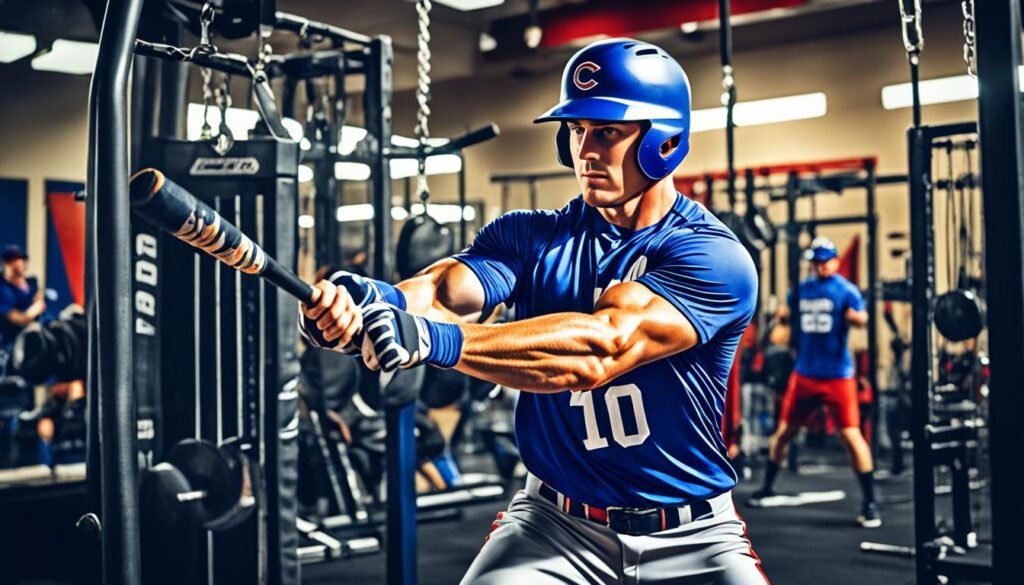
Effective Bat Speed Training Drills
To get better on the field, we must spend time on bat speed training drills. Using weighted bats and plyometric drills can greatly improve our speed and hitting skills.
Weighted Bat Exercises
Weighted bat exercises are great for building strength and speed. They help transfer more energy to the ball, making our hits go farther. Training with heavier bats makes our muscles stronger, improving our swing.
Studies show that adding weighted bat exercises to our routine can boost swing speed16. We should do these exercises often to see the best results.
Plyometric Drills for Explosiveness
Plyometric drills are key for a powerful swing. They help us use fast-twitch muscle fibers for quicker bat movements. Doing exercises like medicine ball throws and jump squats improves coordination and reaction time15.
Adding plyometric training to our batting practice keeps our swing sharp and boosts bat speed.
Using both weighted bat exercises and plyometric drills in our training gets us ready for hitting success. It’s important to set goals and track our progress, adjusting our training as needed. For more tips on improving bat speed, check out this link.
This structured approach to training will help us use our abilities well, leading to better game results161715.
Incorporating Bat Speed Workouts in Your Routine
To boost our bat speed, we need to add structured workouts to our practice plan. This way, we can set aside time to improve our speed and still work on other important skills. A detailed plan helps us get better at bat speed and become well-rounded players.
How to Create a Structured Practice Plan
Building a practice plan means focusing on key areas that affect bat speed. We should mix different training methods, like overload and underload techniques, to boost our performance. Adding exercises like dumbbell goblet squats and landmine shoulder presses targets the muscles needed for faster bat speed18.
It’s also important to include daily drills, such as tee and soft toss drills, in our routine. These drills help us stay consistent and track our progress19.
Balancing Bat Speed Training with Other Skills
It’s key to balance our bat speed training with other skills for better performance. Spending time on core exercises, like planks and rotational medicine ball drills, can greatly improve our bat speed and power18. Also, getting real-time feedback on our swing mechanics from swing analyzers helps us refine our techniques as we go19.
This way, we can make a practice plan that boosts our bat speed and strengthens other essential skills for the game.

Tips for Increasing Bat Control
Improving our bat control is key to hitting the ball well. By working on our bat-to-ball skills, we can hit the ball consistently. Changing how we swing also helps us make better contact, leading to better results.
Focus on Bat-to-Ball Skills
Working on our bat-to-ball skills is crucial for success. Great hitters use the barrel efficiently, making the most of their bat speed1. Tipping the bat forward and then moving it backward helps us use our momentum well1. Keeping our hands back during the swing gives us better control and helps us use our leg muscles for power1.
Adjusting Swing Path for Higher Contact Rates
Changing our swing path helps us hit more often. Shifting our weight, like Ryan Braun does, helps transfer energy while keeping balance1. The “stretch and fire” method, starting with our lower body, lets our hands move forward and boosts power1. Using techniques like Ken Griffey Jr.’s, focusing on power from the ground up, helps us hit consistently and adapt to different pitches1.
| Tip | Description |
|---|---|
| Use Momentum | Tipping the bat forward maximizes speed through the zone. |
| Maintain Hand Position | Leave hands back at shoulders to enhance bat control. |
| Weight Shift | Shift weight effectively from back leg to improve swing energy. |
| Stretch and Fire | Initiate movement with lower body to allow explosive swings. |
| Ground Power | Utilize ground force to produce consistent contact. |
Enhancing Overall Hitting Power
To get better at hitting, we need to work on our core training and lower body strength. This helps us move energy more efficiently in our swing. This leads to faster and stronger hits.
Core and Lower Body Training for Power
A strong core is key for a powerful swing. Doing exercises like Stability Ball Cable Rotations helps a lot. We should do three sets of 10 reps on each side20.
Another good exercise is Cable Rotational Push-Outs. We should also do three sets of 10 reps on each side20. Adding Landmines to our routine can also increase our strength20.
Using Medicine Balls and Resistance Bands
Adding medicine ball workouts to our training helps a lot. We should aim for three sets of 10 reps on each side for Medicine Ball Rotational Throws20. These exercises improve our explosive power and swing mechanics.
It’s best to focus 70% on hitting mechanics and 30% on physical conditioning14. Improving our hitting mechanics can make our bat speed go up by 5-7 mph. This means we hit the ball harder14. As we keep doing these exercises, we might even join elite performance clubs14.

The Role of Intent and Feedback in Training
To improve bat speed, we must use intent and feedback in our training. Having a clear goal helps us move better and hit harder. Feedback lets us adjust our swings in real time, making us better hitters.
Understanding the Importance of Hitting Intent
When we focus on our hitting intent, we aim for better results. Studies show that setting goals boosts our performance. For example, swinging at 60 mph lets us hit the ball 325 feet, but 70 mph gets it 375 feet21.
This shows how our intent affects our results. It motivates us to train with a clear goal in mind.
Using Feedback to Make Real-Time Adjustments
Feedback is key to improving our batting. Tools like bat sensors give us insights into our swing22. Research says external feedback works better than relying on our own feelings22.
By using overload and underload training, we get faster and smarter21. Tools like Google Sheets help us track our progress, making sure our training works21.

Common Myths about Bat Speed Improvement
Looking into bat speed myths helps us train better. Many think lifting heavy weights will make our swing faster. But, strength is just part of the story. We also need good technique and mechanics to hit well.
Improving bat speed is not just about getting stronger. It’s about combining strength with better swing mechanics and skills. This balanced approach is key for hitting well.
Dismantling Misconceptions about Strength Training
Some think strength training is enough for faster bat speed. But, we’ve found that mixing strength training with bat drills works best. The aim is to balance strength with good mechanics for better hitting.
Studies show a link between bat speed and exit velocity. This means batters must work on their skills and strength together23.
Understanding the Limitations of Conditioning Alone
Conditioning seems like an easy way to get better, but it has limits. It can’t replace good hitting technique. To perform well, batters should aim for 90-95% of their max bat speed.
Just focusing on conditioning can lead to missing out on hits24. A balanced approach helps improve bat speed and hitting skills.

In-Hitting Technology for Performance Enhancement
Today, using advanced hitting technology is key for better training. Tools like launching monitors and swing analysis help us see how we’re doing. They show us what we need to work on, making our training more focused.
The Benefits of Launch Monitors
Launch monitors give us important data like exit velocity and launch angle. These are crucial for hitting well. Blast Baseball’s tech is the top choice for over 83% of pro teams, showing its value25. They also track our swing performance and help us see how we’re improving.
Using Swing Analysis Tools for Improvement
Tools like the Blast Baseball Swing Analyzer give us detailed feedback. They track bat speed, peak hand speed, and attack angle. The Blast iQ™ scores each swing and shows where we can get better (green, yellow, or red)25.
Players have seen big improvements, like a minor league player boosting his batting average by 40 points with tools like the Stride Excelerator 36026. This shows how important these tools are for hitting better.

Conclusion
As we conclude our journey into improving bat speed and power, we see the big benefits for better hitting. Understanding the importance of bat speed helps us make better practice plans. We’ve seen how legends like Babe Ruth and Ted Williams chose their bat weights, showing how crucial it is for hitting well27.
Modern methods like focusing on good mechanics and specific drills also boost our hitting skills. For example, bat speeds can really differ; those who don’t show up in stats average 73 mph, but those who do hit 79 mph28. This shows how important technique and conditioning are for getting better.
Improving our bat speed and power is an ongoing process, not just a one-time task. With regular practice, the right training, and understanding our strengths, we can greatly improve our hitting. This way, we can reach our full potential as hitters on the field.
FAQ
How can I improve my bat speed and power?
What is bat speed and why is it important?
How does bat weight affect bat speed?
How can I measure my bat speed effectively?
What training routines can help improve my swing velocity?
What are some effective bat speed training drills?
How can conditioning improve my bat speed?
Why is adjusting my swing path important?
How does my mindset affect bat speed improvement?
What myths about bat speed improvement should I be aware of?
How can technology help enhance my performance?
Source Links
- https://www.hitterish.com/single-post/5-ways-to-increase-your-bat-speed
- https://www.drivelinebaseball.com/2021/08/hit-the-ball-harder-how-to-increase-your-bat-speed/?srsltid=AfmBOoofnZ-eNyZBYDY53eToI-s-pdpD_qDdRp63bH3lYqvGoTBT0z1j
- https://www.drivelinebaseball.com/2019/05/debunking-bat-speed-myths/?srsltid=AfmBOooHKQLP4lVhhIFQeP_2UdTywq5A9QOw10KwBaIOoOOR-PCEMkFb
- https://www.patrickjonesbaseball.com/blog/why-is-bat-speed-so-confusing
- https://www.drivelinebaseball.com/2019/05/debunking-bat-speed-myths/?srsltid=AfmBOoqKzMGbdoASdmromDsp08CK2app0rCBbjNWyiwWFpjXLGT2AgkU
- https://www.drivelinebaseball.com/2021/08/hit-the-ball-harder-how-to-increase-your-bat-speed/?srsltid=AfmBOopHYdNMPRKGvihODby4febFroxCvJBlC45AwUjtH0Haleho2IK8
- https://www.drivelinebaseball.com/2020/04/measuring-and-improving-baseball-swing-efficiency/
- https://community.hsbaseballweb.com/topic/bat-speed-15
- https://baseballnotes.com/missile-method-introduction/
- https://community.hsbaseballweb.com/topic/increasing-bat-speed
- https://www.drivelinebaseball.com/2021/08/hit-the-ball-harder-how-to-increase-your-bat-speed/?srsltid=AfmBOoqHLcJ9Uf40fQXOqEvGfTZD6zfDukxq2i2wjuSBerwBfTaGh7uL
- https://rocklandpeakperformance.com/how-to-increase-bat-speed-in-weight-room/
- https://www.korebaseball.com/blogs/blog/the-ultimate-guide-to-baseball-hitting-mechanics-for-maximum-power-a-step-by-step-breakdown
- https://torque-hitting.com/2024/01/01/how-to-improve-bat-speed-conditioning-or-mechanics/
- https://perfectswingsusa.com/blogs/news/increase-bat-speed
- https://www.drivelinebaseball.com/2021/08/hit-the-ball-harder-how-to-increase-your-bat-speed/?srsltid=AfmBOorx-gctz5tYR_HBme2IabRJYrrR0JhE4xL74AtKDFypEaOSBBc1
- https://www.topvelocity.net/2023/06/22/tee-drills-to-increase-bat-speed/
- https://www.baseballtraining.com/improve-bat-speed/
- https://sportstradersduncan.com/how-to-develop-bat-speed/
- https://www.stack.com/a/hitting-power-exercises/
- https://medium.com/@smithryan/bat-speed-development-8a1a7fed2b60
- https://www.drivelinebaseball.com/2017/02/coaching-hitting-mechanics-part-2-application/
- https://www.drivelinebaseball.com/2019/05/debunking-bat-speed-myths/?srsltid=AfmBOoqgC8so0RxlkLLzHNBs8ck-lzjuGCB_WwMK5GowqRsF9CGINX6-
- https://clients.chrisoleary.com/Hitting/Webbooks/Hitting-Mechanics-101/First-Do-No-Harm/Myths-About-Hitting
- https://blastmotion.com/products/baseball/
- https://www.topvelocity.net/2023/04/12/best-hitting-aid-for-increasing-bat-speed/
- https://www.acs.psu.edu/drussell/bats/batw8.html
- https://hittingperformancelab.com/buster-posey/

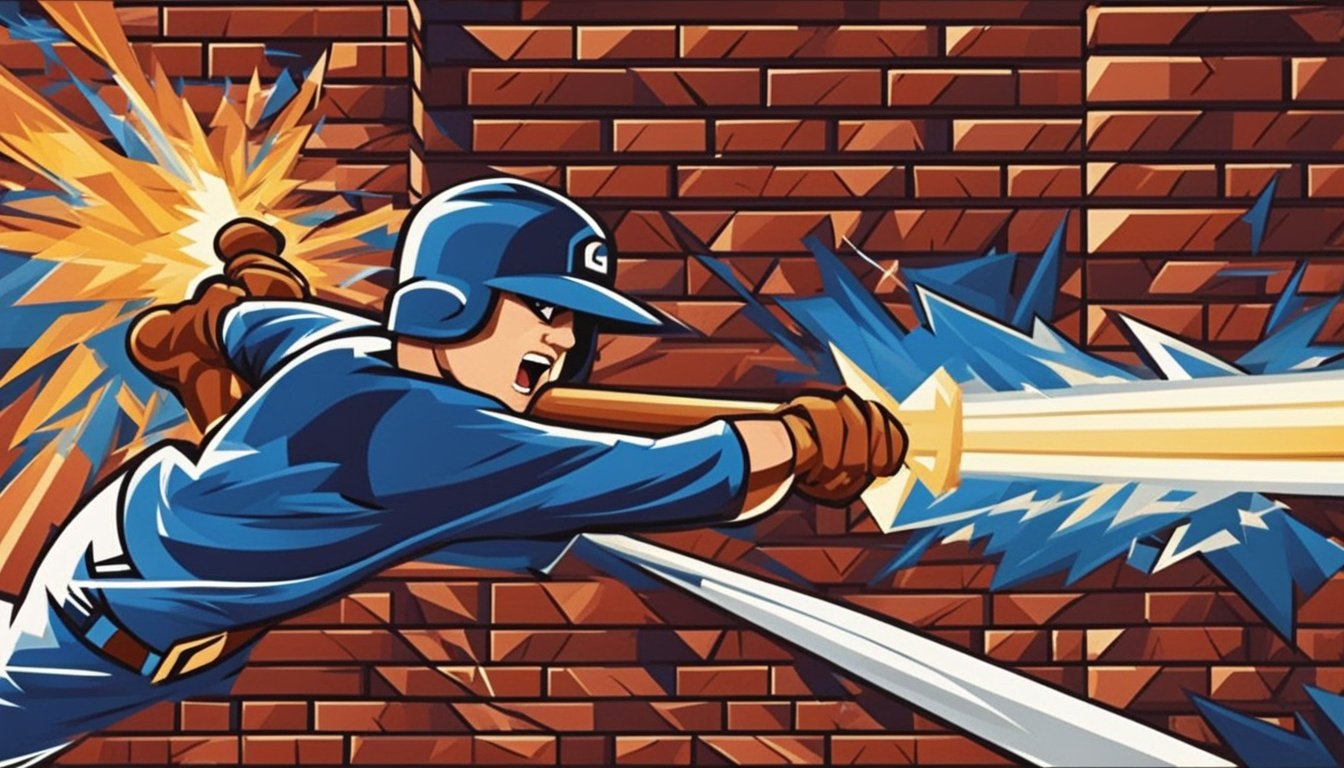
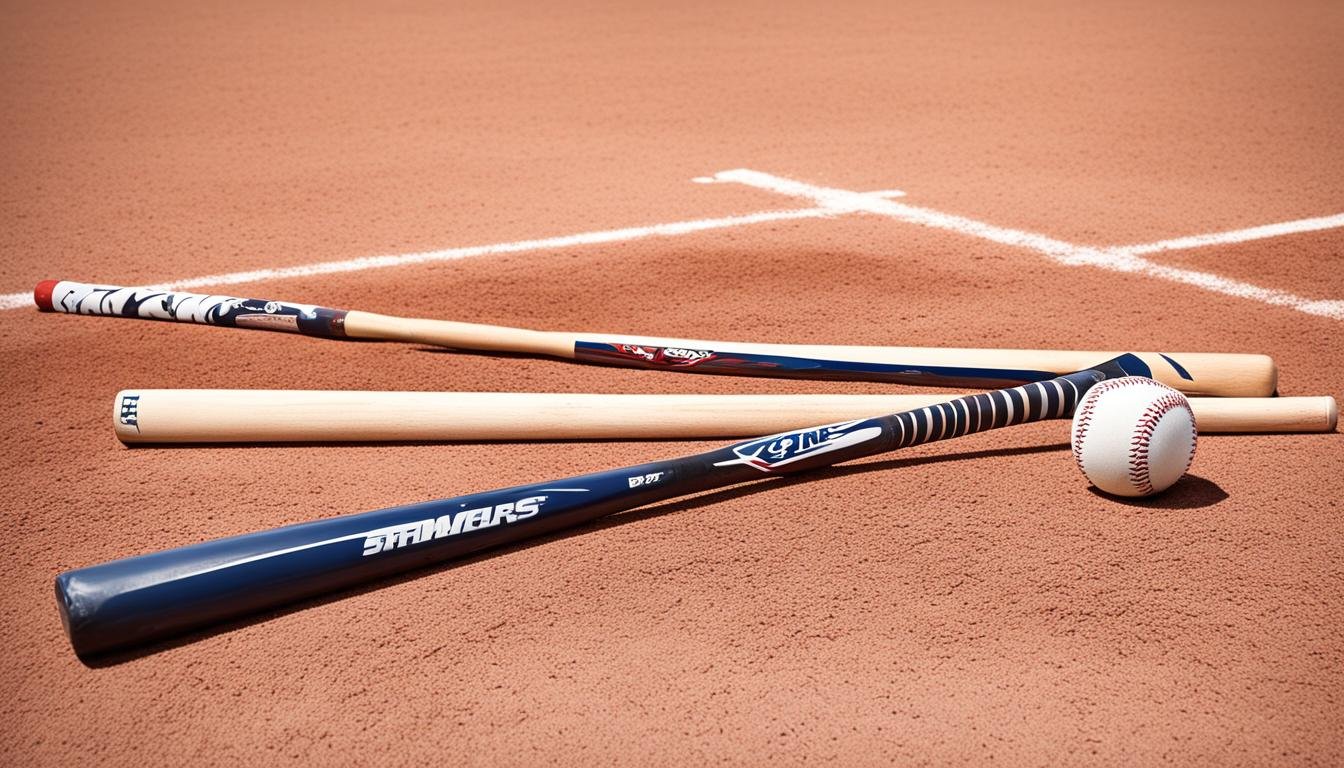

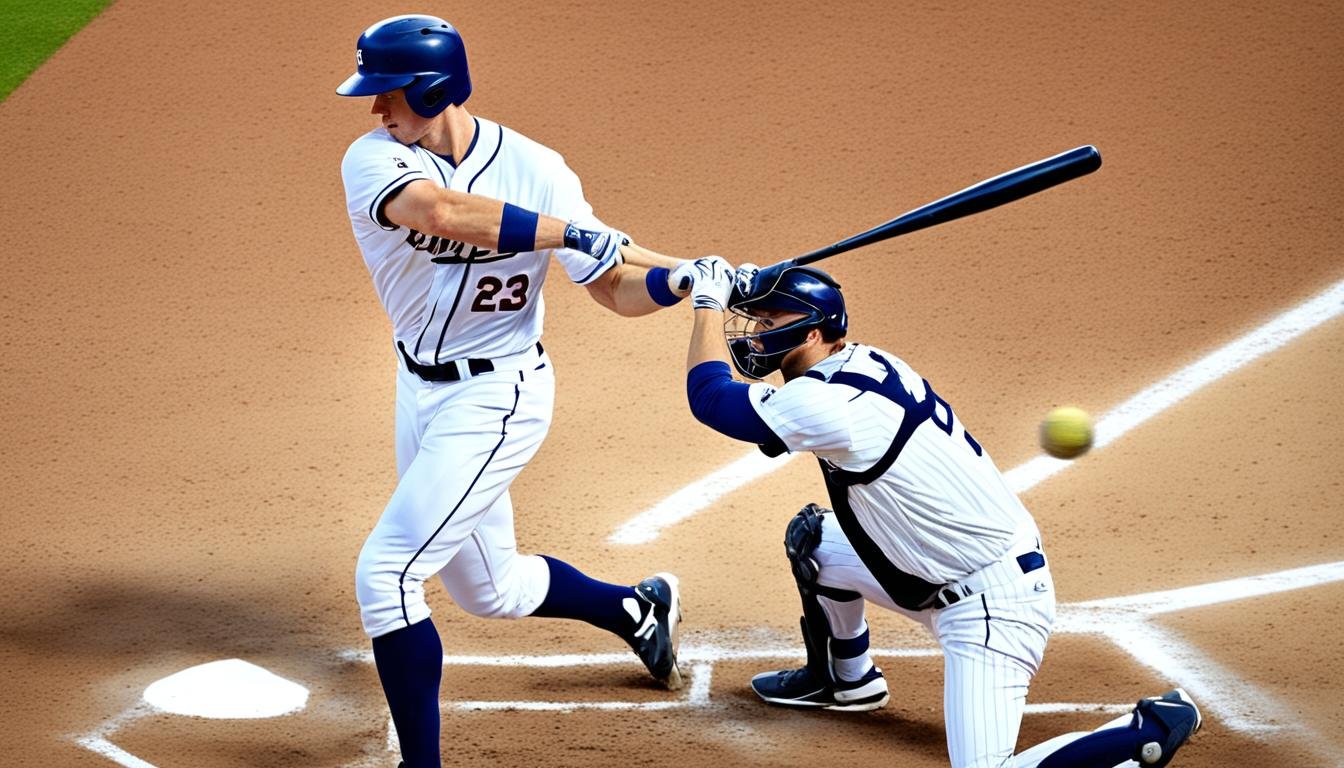

7 COMMENTS